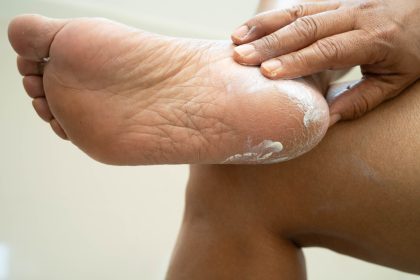As the seasons change and the air turns crisp, many of us find ourselves enjoying the beauty of fall. However, with the arrival of colder weather comes the risk of dry, itchy patches on our skin, particularly on the face. If you’re experiencing these uncomfortable symptoms, you might be searching for effective solutions, such as a moisturizer for dry skin or exploring trending skincare routines like skin flooding. However, understanding the root cause of dry patches is essential for effective treatment.
What are dry patches?
Dry patches on the face are localized areas where the skin lacks moisture. According to Dr. Flora Kim, a board-certified dermatologist, these patches can appear pink or red and may feel crusty, scaly, flaky or itchy. They often manifest as small, raised areas with a texture resembling rough sandpaper. However, not all dry patches are created equal; some may simply be a reaction to environmental changes, while others could indicate more serious skin conditions.
Common causes of dry patches
Understanding the causes of dry patches is crucial for effective treatment. Here are some common culprits:
Cold weather: The winter months can sap skin hydration due to low humidity and harsh winds. Dr. Hadley King explains that using a humidifier can help combat this issue by adding moisture back into the air.
Makeup removers: Some makeup removers contain harsh ingredients that can disrupt the skin’s microbiome and barrier function, leading to dryness. Dermatologist Joshua Zeichner recommends using products with probiotic ingredients to support skin health.
Seborrheic dermatitis: This common condition can cause dry, scaly skin, particularly in areas like the eyebrows and around the nose. It occurs when yeast levels on the skin become unbalanced, leading to inflammation.
Eczema: Affecting millions of Americans, eczema is a chronic condition that results in red, scaly, itchy rashes. It often requires specialized treatments to manage effectively.
Diet: A diet low in healthy fats can contribute to dry skin. Increasing your intake of omega-3 and omega-6 fatty acids can help improve your skin’s moisture barrier.
Over-exfoliation: While exfoliation can be beneficial, overdoing it can damage the skin’s protective barrier, leading to increased dryness.
How to treat dry patches
Once you’ve identified the potential causes of your dry patches, it’s time to explore treatment options. Here are some dermatologist-backed strategies:
Stay moisturized: Applying a rich moisturizer is crucial. Look for products that contain humectants like hyaluronic acid and emollients such as ceramides and shea butter to lock in moisture.
Switch to creams: If you’re using gel-based moisturizers, consider switching to cream formulations, which can provide more hydration without clogging pores.
Use a gentle cleanser: Opt for non-soap body washes that hydrate the skin while cleansing. Avoid harsh soaps that can strip the skin of its natural oils.
Limit hot showers: Long, hot showers can exacerbate dryness. Instead, use lukewarm water and limit your shower time to eight minutes.
Consult a dermatologist: If your dry patches persist or worsen, it’s essential to seek professional advice. A dermatologist can provide a proper diagnosis and recommend effective treatments.
Recommended products for dry skin
Here are some products that can help alleviate dry patches:
Aquaphor Healing Ointment – A versatile moisturizer that creates a protective barrier on the skin.
CeraVe Moisturizing Cream – Contains ceramides to help restore the skin barrier.
Aveeno Ultra-Calming Daily Moisturizer – Offers soothing properties for sensitive skin.
Dry patches on the face can be uncomfortable and frustrating, especially during the colder months. By understanding the causes and implementing effective treatment strategies, you can restore your skin’s moisture and health. Remember to consult with a dermatologist for personalized advice and treatment options tailored to your skin’s unique needs.
















